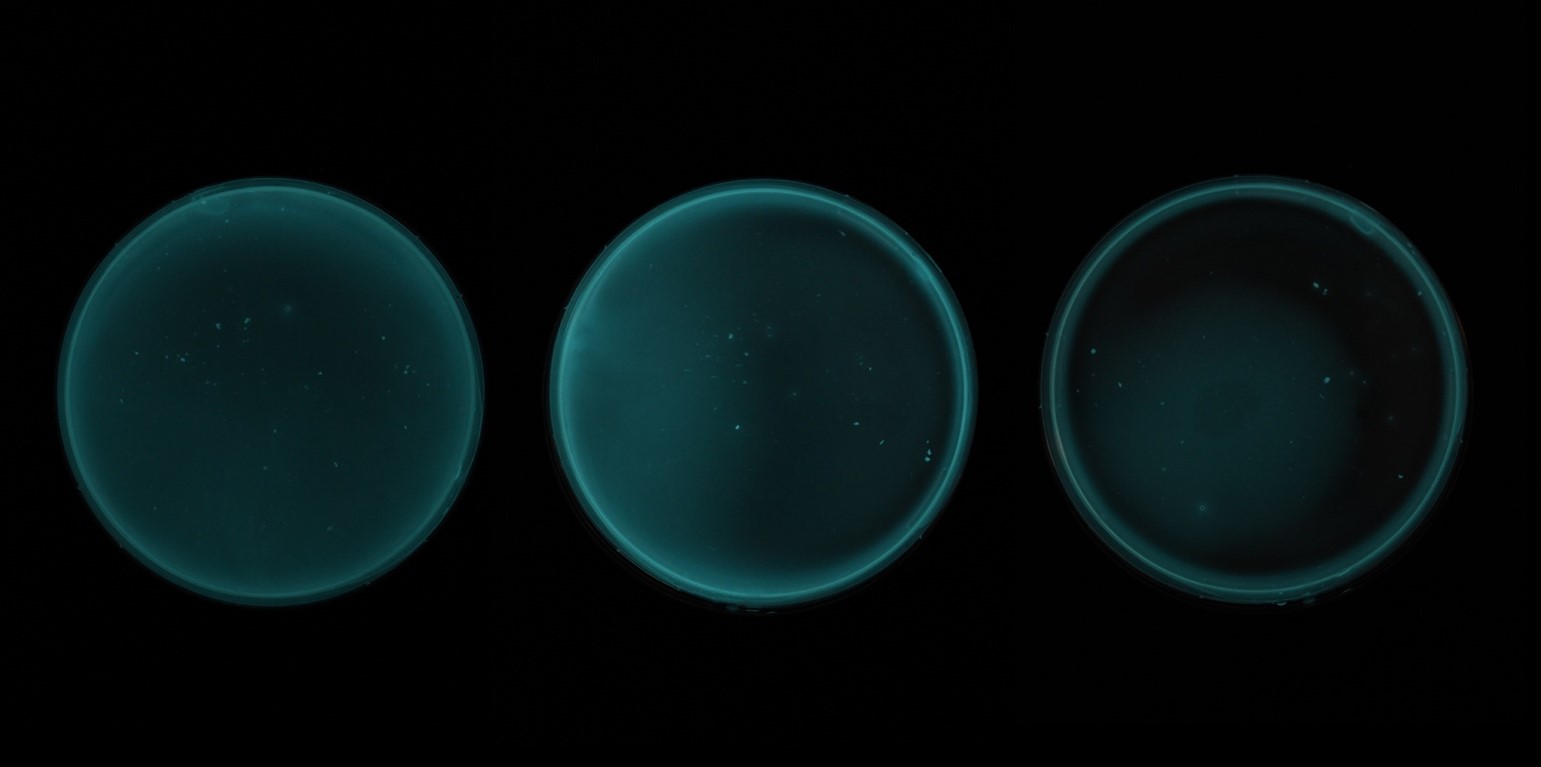For ‘NECROPOIESIS’, Tabet created a box system that makes the bacteria Pseudomonas putida self-destruct if a voice command is given. Once the death sentence is pronounced, the lethal gene is chemically induced and causes programmed cell death. She used bioluminescent cloned bacteria, thus once the bacteria started to die, it was possible to see the dying process through the gradual loss of light emission. With a camera inside the box, the artist recorded the loss of luminescence over a period of three hours. She transformed the sequential pictures of the dying bacteria into a time lapse video piece. In addition to that, she also used another recording technique that captured the loss in bioluminescence onto analog X-ray films every ten minutes (X-ray film is also sensitive to visible light once the protective cover is reduced).

Image with three time stages showing the gradual dimming of bioluminescence in NECROPOIESIS (Photo L. Tabet)
Tabet elaborates on her work as follows:
“Both the rayographs and the video were recorded evidence of the human-induced microbial performance. The former is an analog snapshot, the latter a digital long exposure. An analog trace and its digital twin. Each one exists in its own frame of semiotics. The X-rays are reminiscent of the cosmic death of a star. They speak of (light) decay, of cosmic decomposition. The time-lapse video, on the other hand, exists in a moving image frame of reference, and the combination of motion blur and phosphorescence brings us back to the imaginary of the primordial soup.”

